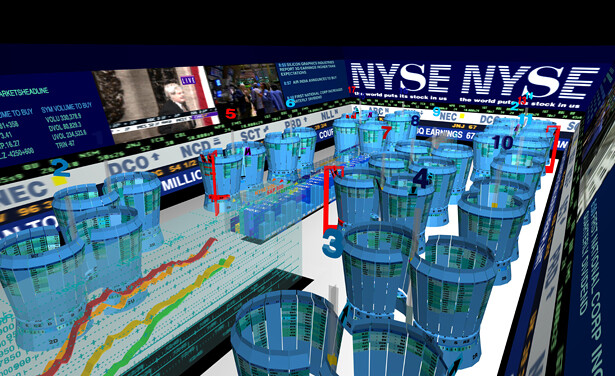21 May–5 October 2014
Opening: 21 May
Canadian Centre for Architecture
1920, rue Baile
Montreal, Québec
Canada H3H 2S6
T +1 514 939 7001
[email protected]
www.cca.qc.ca
The Canadian Centre for Architecture (CCA) presents Archaeology of the Digital: Media and Machines, an exhibition that focuses on experimentation in computation, interaction and the design of virtual environments in the 1990s. The exhibition, which opens on 21 May and is followed by a public discussion with the curator and the featured architects on 22 May, will be on view in the CCA’s main galleries until 5 October.
Curated by Greg Lynn, Media and Machines is the second of three Archaeology of the Digital exhibitions stemming from the CCA’s digital archiving initiative, in which a total of twenty-five seminal projects that engaged architectural design with digital technology are being assembled, inventoried, investigated, catalogued and archived in the CCA Collection. This process of discovery suggests that the period from the mid-1980s until the turn of the century will prove to be a pivotal moment in architecture.
The projects included in Media and Machines share the understanding of the potential of an architectural object or environment to exist beyond a mere building through an intensive use of digital tools. In the projects presented here, architects looked to technology to shape new and unprecedented experiences, in many cases approaching the digital as both a design medium and as media content to be integrated into architecture.
The projects include Asymptote’s New York Stock Exchange Virtual Trading Floor and Operation Center, Karl Chu’s Catastrophe Machine and X Phylum, Bernard Cache’s Objectile Panels, dECOi Architects’ HypoSurface, ONL [Oosterhuis_Lénárd]’s NSA Muscle and NOX’s H2Oexpo pavilion. Their creative breadth extends from the design of buildings to the design of interactive media, interactive robotic mechanisms, dynamical drafting machines, generative algorithms, websites, 3D digital models, digital animation files, CAD drawings and the production of renderings, physical models, sketches, and the development of disciplinary and cultural theories.
About the curator
Greg Lynn is widely recognized as an innovator in redefining the medium of design with digital technology as well as pioneering the fabrication of complex functional and ergonomic forms using Computer Numerically Controlled machinery. He is Ordentlicher University Professor at the University of Applied Arts in Vienna and a Studio Professor at UCLA’s School of Architecture and Urban Design, where he is currently spearheading the development of SUPRASTUDIO, an experimental research robotics lab. Since the turn of the century he has been the Davenport Visiting Professor at Yale University.
Publication
The Archaeology of the Digital initiative is partly developed, documented and disseminated through a publication program encompassing print and digital books. A 400-page volume was published by the CCA and Sternberg Press in 2013 to accompany the first exhibition. The book includes an introductory essay by Greg Lynn and 11 interviews with the project authors—Peter Eisenman, Frank Gehry, Chuck Hoberman and Shoei Yoh—their collaborators, and external consultants, such as aerospace engineers and software programmers.
In 2014 the focus is on a series of monthly digital monographs of each of the projects featured in the three-year exhibition program. Designed by Linked by Air and available on iBooks, the series advances the boundaries of architectural publishing by incorporating visuals that range from raster images to vector drawings, video and animations, audio and even digital 3D models, as ePub technology evolves. For further info click here.
About the CCA
Celebrating the 25th anniversary of its opening in 2014, the CCA is an international research centre and museum founded on the conviction that architecture is a public concern. Based on its extensive collection, exhibitions, public programs, publications and research opportunities, the CCA is a leading voice in advancing knowledge, promoting public understanding, and widening thought and debate on architecture, its history, theory, practice, and role in society today.


